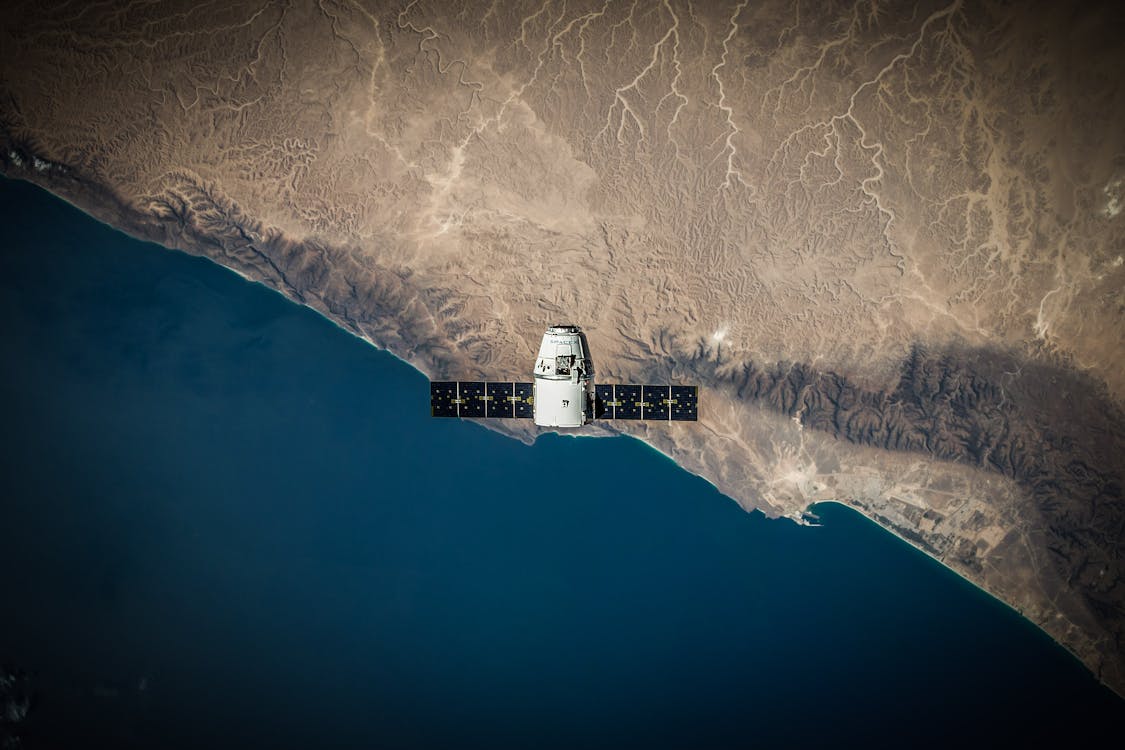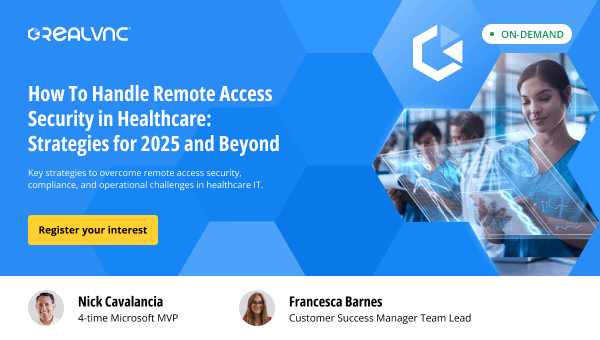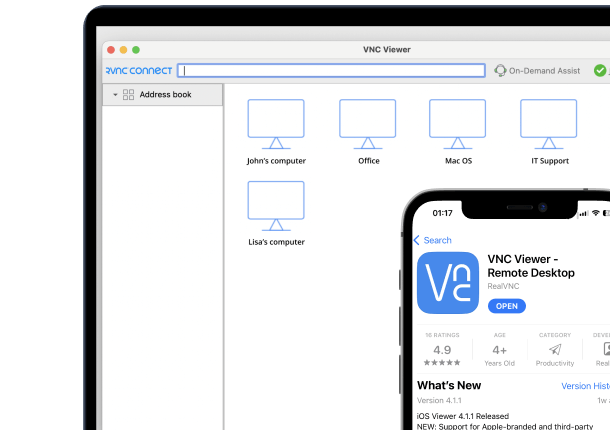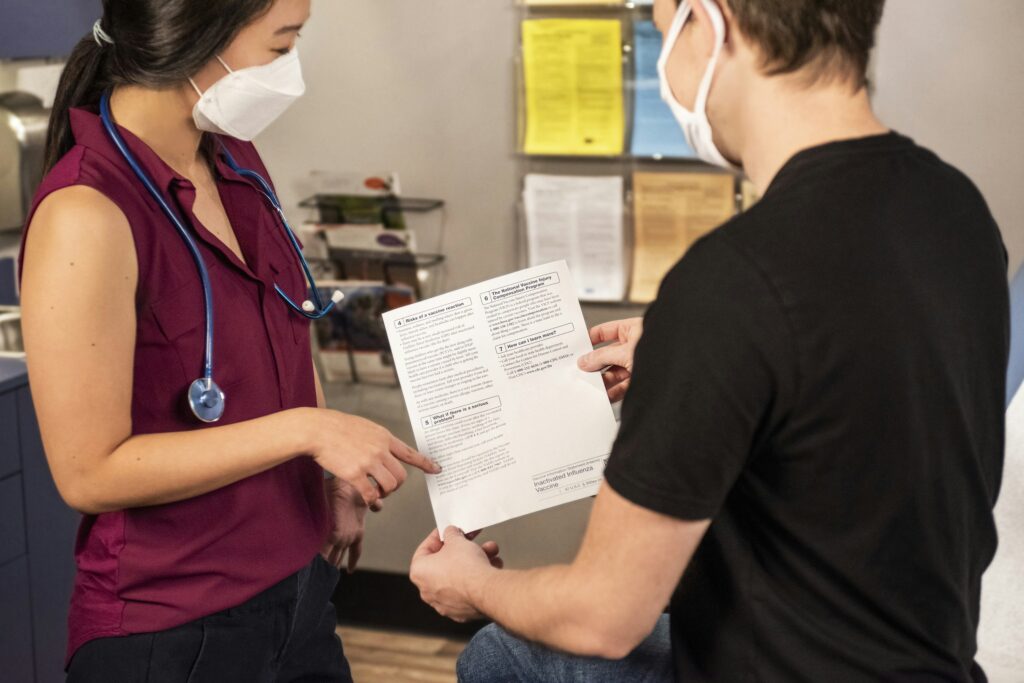Whether they’re down the hall or across the globe, today’s work culture has shifted from being in the office to having access to corporate assets from afar.
At the heart of this shift is the Remote Access Server (RAS), a technology that quietly helps organizations break through the barrier of access to local information services.
By enabling remote access securely, these servers let remote workers and modern businesses tap into essential network resources, no matter where they are.
While RAS helps build secure remote infrastructure, it’s worth clarifying how this differs from software-based tools like RealVNC Connect. Unlike RAS, RealVNC isn’t a standalone infrastructure. Instead, it’s a versatile and user-friendly solution that can replace and enhance traditional RAS systems, depending on your business needs.
Let’s explore how RAS works, how it can benefit companies with remote teams, and how RealVNC offers an alternative solution for businesses seeking remote access without the expensive infrastructure.
Beyond Wires and WiFi: How Does a Remote Access Server Work?
A Remote Server acts as the backbone for secure remote connections, giving users a centralized gateway to access the private network resources of a business or organization.
It often employs technologies like Virtual Private Networks to establish a safe link between remote devices and an organization’s local network.
What Exactly Is a Remote Access Server?
A Remote Access Server serves as a centralized hub for managing and enabling remote connections. Acting as a secure gateway, it allows remote users to connect to a company’s private network while keeping the connection between devices and resources protected. Additionally, it manages resource allocation to ensure authorized access and tracks remote user activities for compliance.
These servers typically rely on a mix of hardware, software, and tools that support protocols such as VPN (Virtual Private Network) or Remote Desktop Protocol (RDP). Common examples include Microsoft’s Routing and Remote Access Service (RRAS) or specialized proprietary protocols from device manufacturers such as Cisco and Mikrotik.
With these elements working together, employees can remain productive and connected, whether at home, on the go, or over the other side of the world.
How Does RAS Keep Remote Connections Secure?
The strength of remote access servers lies in their ability to establish secure, reliable connections over the internet. Protocols such as VPN and VNC, combined with advanced encryption protocols, shield sensitive data as it moves between remote devices and the business local network.
Features like two-factor authentication provided additional layers of security, ensuring only the right people can access critical resources.
How RealVNC Differs
Unlike a traditional RAS setup, RealVNC Connect does not require any centralized hardware or complex VPN configurations and firewall rulesets. Instead, it provides a software-based solution that allows users to securely access the desktop or CLI of a device and resource remotely.
This makes RealVNC an ideal choice for businesses that need a simpler, more flexible alternative to traditional RAS infrastructure.
With solutions like RealVNC Connect, organizations can remotely access organization resources with improved security. All while maintaining low-latency and reliable connections fast enough to make remote working feel like being in the office.
Features That Set Remote Access Servers Apart
Remote access servers are a bridge between users and their network, but some attributes set them apart from traditional remote connectivity solutions.
Below, we take a look at some of the powerful features included in remote access servers and platforms that meet the needs of modern business.
Universal Compatibility
Remote access servers aren’t limited to single operating systems. Whether you’re running Windows, macOS, Linux, or even appliances, an RAS platform works seamlessly with all of them.
This compatibility extends to user devices such as Windows tablets, Android, ChromeOS, and iOS. Additionally, remote access servers generally support the use of native OS VPN apps and protocols, meaning a wide range of network setups are supported.
Guardrails for Your Data
Security is a critical consideration in remote access solutions, but not all RAS options offer the same level of protection. Some provide multi-factor authentication and encryption, but the strength of these measures varies widely.
Many of the security issues that are present in out-of-the-box installations of remote access servers can be mitigated through additional layers of security, including firewall rules, port changes, and the creation of private keys for access.
As a software-based solution, RealVNC enhances this with customizable options for select users, offering secure remote access that aligns with the unique requirements of any organization by default.
Reliable Performance Anytime, Anywhere
Performance is another hallmark of remote access servers. Features like load balancing manage network traffic efficiently, keeping connections fast and stable.
Real-time monitoring tools provide insights into system performance and network activity, helping to support remote access without interruption in the case of network changes and high-ping connections.
Smart Strategies for Managing Remote Access Effectively
Once your remote access server has been set up, managing it is quite simple. The same strategies you use for managing your existing IT infrastructure can enable remote access, make it secure and reliable, and keep downtime to an absolute minimum.
Stay Prepared and Proactive
- Regularly update your software and hardware to patch vulnerabilities to stay well ahead of any potential threats and resolve issues quickly.
- Alternate maintenance schedules for regular security patching, as locking out remote technicians during downtime isn’t ideal.
Empower Your Team
- Offer clear and thorough training not only on access protocols but also best practices when it comes to both connecting and the types of networks they connect over.
- Educate your team on recognizing and reporting any possible security risks.
- Enforce user lockout and device locking policy to quickly disable access from a lost or stolen device.
Keep a Watchful Eye
- Use audit logs to keep track of user activity while connected via remote access.
- Leverage real-time monitoring tools to spot and address vulnerabilities as they arise.
- Enforce a deny list of websites and platforms to prevent data breaches or company leaks when users are connected. The same rules for in-office employees should also apply to a remote system or computer.
The Road Ahead for Remote Access Servers

With the advent of satellite-based internet services like SpaceX’s StarLink and the world moving toward a more interconnected future, expect the demand for remote access services to increase—and advance in their sophistication.
While RAS will continue to play an important role in many organizations’ IT frameworks, software-based tools like RealVNC Connect point to a future of more flexible and affordable connectivity.
With developments like AI-powered network management and stronger encryption technologies, traditional RAS and software solutions will evolve to meet the needs of an increasingly remote-focused world.
RealVNC remains at the forefront of this evolution, offering reliable and user-friendly remote access tools for organizations of all sizes—not just those that can afford large-scale centralized RAS.
Whether used alongside existing RAS infrastructure or as a standalone solution, RealVNC helps businesses stay connected and productive—anywhere and anytime.
Conclusion
Remote Access Servers offer organizations a reliable way to enable more secure and efficient connectivity, but they aren’t the only option for supporting remote work.
RealVNC provides a more modern solution—a flexible, software-based approach that streamlines remote access without compromising security. By opting for RealVNC, your organization can transition from a traditional and expensive RAS setup to a forward-thinking remote access model.
RealVNC Connect keeps your teams connected securely and productive no matter where they’re working.





